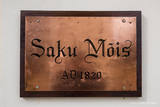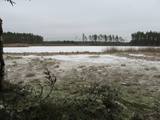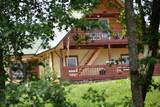| Нo | Название | Описание |
|---|---|---|
|
Ekskursijas laikā apmeklējiet dabas taku, kurā ir iespēja iepazīt Amatas novada dabas objektus gar Kumadas upes, Dančupītes un Amatas upes krastu. Pēc tam apmeklējiet Cēsu pils kompleksu. Viduslaiku pils sniedz iespēju iejusties 800 gadus tālā pagātnē, uzkāpt ar sveču lukturīšiem Rietumu tornī, nokāpt cietumā, kā arī redzēt, kā kalējs darina latgaļu rotas. Blakus esošā Jaunā pils ir 18. gs. celta pilsmuižas kunga māja, kurā tagad atrodas Cēsu Vēsture un Mākslas muzejs. Ekskursijas noslēgumā dodieties uz lauku māju Smiltenes novadā, lai iepazītu maizes cepšanu pēc sentēvu tradīcijām, kā arī pašiem izveidot savu maizes kukulīti. |
||
|
This manor is a prime example of classical architecture in Estonia. Since 2002 Saku manor is also a recreational centre. |
||
|
Находится в центре Вентспилса и расположено в построенном в стиле классицизма деревянном здании XIX столетия, которое принадлежало роду Купферов. Латышская кухня: Крестьянский завтрак, овсяная или манная каша, картофельные блины, тонкие блинчики с вареньем. Особое блюдо: Глазунья с окороком и маринованным огурцом. |
||
|
Aptuveni 2km garā Ķirbižu meža izziņas taka izveidota apļveidā gar Vitrupes abiem krastiem. Visā takas garumā var mācīties atpazīt Latvijas mežu raksturīgākos kokus, krūmus un augus. Šeit var aplūkot arī Vālodzes dižozolu (6.5 m). Upes labajā krastā, pie tā sauktā vīna pagrabiņa un kreisajā krastā apmēram 200 m no takas sākuma pie Meža muzeja, atklājas ainaviski skati uz ieleju un Vitrupi. |
||
|
Zemnieku saimniecība "Dzirnas" nodarbojas ar bioloģisko putnkopību, audzē zemenes un dārzeņus. Saimniecība apsaimnieko 11 ha zemes. Tajā iegūtās olas ar zīmolu "Vistu olas", sīpoli un ķiploki tiek pārdoti veikalos "Klēts" Rimi hypermārketos Rīgā. Savukārt zemenes pārdod dzimtajā Alsungā, kā arī pēc pieprasījuma piegādā Rīgā. Iespējams arī apmeklēt un apskatīt saimniecību, taču nepieciešmaa iepriekšēja pieteikšanās. |
||
|
Saimniecībā, kura atrodas pašā Sēlijas novada centrā, aug un zied vairāk nekā 400 dažādu rožu šķirnes, kā arī siltumnīcās tiek audzēti dažādi dārzeņu un puķu stādi. Iegādei tiek piedāvāti dažādi viengadīgie augi, vairāki simti rožu stādi un ēdamaugu stādi siltumnīcai un dārzam. |
||
|
Work on the arboretum, which covers 15 hectares of land, began in 1968, and it was meant to be a landscape park. The first plants were planted in 1972. During the fierce winter of 1976, sadly, many of the plants froze. In 1987, the park was redesigned. At that time it had 234 types of deciduous trees, coniferous trees and bushes. There are signs showing the Latin and Latvian names of the various plants
|
||
|
This is one of the most impressive and extensive natural structures of its kind in Latvia in terms of appearance and landscape. The ice age left behind this wall-like terrain, which is up to 27 metres high and at the top of which the Rīga-Ērgļi road has been built. The Great Kangari hills offer a view of the Great Kangars lake and the Great Kangari swamps and ponds. The Ķoderi castle hill, also known as the “Big Man’s Bed” is found here. The restricted area was established to protect the structure and its related biotopes and plants.
|
||
|
Этот тур предлагает вниманию путешестенников самые изысканные объекты культурного и исторического наследия, оставленного на протяжении нескольких веков — средневековые замки, различные поместья и восхитительные дворцы. Маршрут частично проходит через Национальный парк Гауя с отличными видами на луга и старинный лес, где фермерские хозяйства живут по своим неизменным устоям. Живописная дорога соединяет три замка — Сигулду, Турайду и Кримулду, расположенных на высоких берегах долины реки Гауя. Далее маршрут идет через одну из старейших церквей в Латвии и направляется в сторону двух примечательных поместий 19 века — Бирини и Игате. На следующий день отдохните с шиком в поместье — гостинице Дикли. Маршрут следует дальше, через очаровательный средневековый город Цесис с величественными руинами замка и новым замком вблизи. Вторая часть тура охватывает кольцо примечательных замков и дворцов в Земгале. Она включает в себя Яунпилский Замок, который незначительно изменился со времен средневековья, руины замка в Добеле и старинное городище в Тервете. Недалеко друг от друга находятся Баусский замок 15 века, стратегически расположенный между двух рек, Дворец Межотне в классическом стиле и самая знаменитая жемчужина Балтии - великолепный Рундальский Дворец в стиле барокко и рококо, окруженный французским парком. |
||
|
Divas mazas apdzīvotas vietas nacionālā parka dienvidrietumu daļā. No kādreiz piecām Kolski ciema saimniecībām līdz mūsdienām ir saglabājusies tikai viena. Kolski iedzīvotājus līdzīgi kā citviet Baltijas valstīs pēc 2. pasaules kara deportēja uz Sibīriju. Kolski apkārtnē redzamie mājdzīvnieki „apsaimnieko” šejienes pļavas, neļaujot tām aizaugt ar mežu. Tādējādi tiek uzturēta apkaimes vēsturiskā ainava. 3 km dienvidrietumos meklējams Kobasāres ciems. Tā nosaukums (koopa no igauņu valodas nozīmē ala, saar – sala) atgādina par Ziemeļu kara notikumiem, kura laikā cilvēki slēpušies pašu raktās alās. Kobasārē un tam blakus esošajā Apjas (Apja) ciemā var izbaudīt patiesi 21. gadsimtam nepierastas lauku ainavas. |
||
|
Кафе находится в Екабпилсе, в т/ц «Аура», на левом берегу реки Даугавы. Дерево, используемое в интерьере кафе, придает помещению уют и деревенский стиль. Здесь можно позавтракать, пообедать или поужинать.. Время работы: 9:00 – 20:00. |
||
|
Находится в Букупе (Салдусский край, Зирньская волость) в сельской усадьбе «Зики». Можно осмотреть коллекцию кино и фото экспонатов, собранную хозяином усадьбы Андрисом Бушинскисом. Коллекция включает старинные устройства для создания фильмов и предметы, демонстрирующие процесс фотографирования и киносъемки. Экспозиция размещена в бревенчатой постройке в виде пчелиных сот, построенной хозяином. |
||
|
Tūristu nometne, smailīšu noma laivošanai pa Šventosios (Svēto) upi un tās pietekām Vyžuonos, Jaros upēm. Piedāvājumā 4 atsevišķas atpūtas vietas ar teltīm, kurās pieejamas dārza mēbeles, vieta grillēšanai, iesmi, pirts upes krastā, āra tualete, mazgāšanās telpa, bērnu rotaļu, volejbola un futbola laukumi. Lielajā dārzā iespējams uzņemt līdz 50 cilvēkiem. Vieta svinībām, festivālu rīkošanai, sanāksmēm un semināriem. Vienā no mājām ir pirts, kā arī divas Krievu prirtis un kubls upes krastā. Piedāvājumā ēdienu pēc iepriekšēja pieprasījuma. |
||
|
В музее можно послушать рассказ об истории шоколада, ознакомиться с процессом от получения до готовой продукции, а также в творческой мастерской самим приготовить и попробовать горьковато- сладкое лакомство. В магазинчике по соседству можно купить готовую продукцию. |
||
|
The viewing area on the Ērgļi (Ērģeles) cliffs offers an impressive view of Latvia’s most monolith sandstone cliffs (up to 22 metres high) – this is the highest location in the Gauja River valley. Please be very careful and don’t go anywhere near the edge of the cliff!
|
||
|
Eine der schönsten Landkirchen Estlands, wurde ursprünglich als Zufluchtsort verwendet. Wurde im Stil der Frühgotik gebaut. Die Wandmalerei aus dem Jahr 1330. |
||
|
Meklējams Matsalu līča dienvidu krastā pie Kēmu ostas (Keemu sadam). Blakus sešus metrus augstajam metāla – koka tornim uzcelts neliels apmeklētāju centrs. Tāpat kā no Haeskas torņa, arī no šī paveras viena no izcilākajām Matsalu līča un tā piekrastes ainavām. Laba putnu vērošanas vieta migrāciju laikā. |
||
|
Gebaut in 1610, später umgebaut. Eins der hervorragenden Gebäuden Litauens der Renaissance. Eine Ausstellung der Kunstakademie Vilnius. Ein Aussichtsturm. |
||
|
Atrodas sporta un atpūtas kompleksā „Trīssaliņas”. No torņa paveras pievilcīga apkaimes ainava, kas īpaši skaista ir pieneņu ziedēšanas laikā. |
||
|
В парке находятся пять лабиринтов с декоративными растениями, цветами и лекарственными травами: чабрецом, флоксами, старинными сортами пионов, окопником, зверобоем, жасмином, хеномелесом (японской айвой), зорькой халцедонской, борцом клобучковым, душицей, эстрагоном, примулой, пижмой, чистотелом, девясилом, мятой, золотарником, таволгой и мн. др. Самый длинный маршрут составляет 1,7 км, а общая протяженность дорожек всех пяти лабиринтов: около 4,5 км. Также в парке выставлены три геометрические фигуры: купол, мандала, меркаба. |
||































